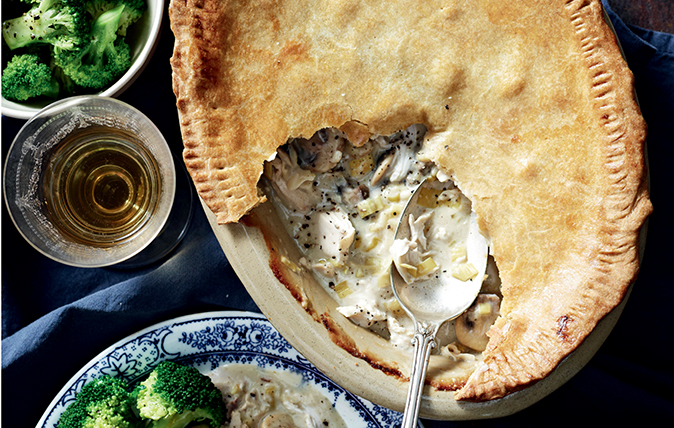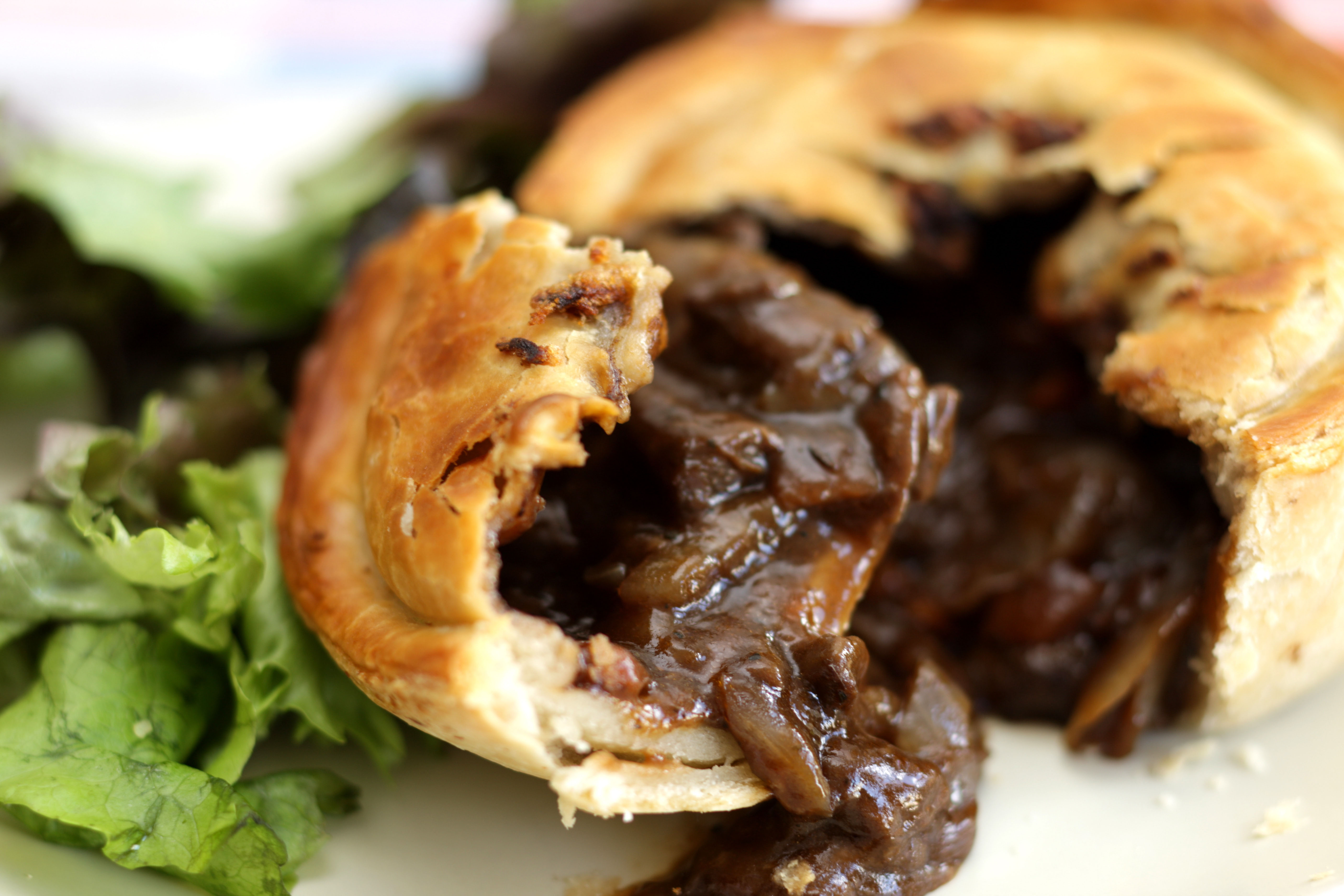The best of British pies
Tom Parker Bowles tucks in to find out who’s eating all the British pies.


Pie: a word as succulent as the finest of fillings, one soft syllable from which springs 1,000 joyous feasts. Seriously, who doesn’t love a pie? it’s the great uniting dish, gloriously democratic and totally free from class or cant. Dukes and dustmen, colonels and Communists, Thatcherites and Trade Unionists... all united in one mighty cry for pie. ‘Pies in England may be considered as one of our best companions du voyage through life,’ sighed Alexis Soyer, that great French chef and Reformer. ‘It is we who leave them behind, not they who leave us.’
Equally at home in the tiled utilitarian surroundings of East End pie-and-mash shops as they are on gilded platters in sumptuous houses, it matters little whether you’re shivering on the football terraces or warming by the shooting lunch’s roaring fire as this splendidly British concoction offers sustenance, succour and delight, an edible icon baked deep into our language, culture and affection.
‘We have, throughout our history as a nation,’ writes Rupert Croft-Cooke in English Cooking, ‘had a weakness for meat in pastry which, while it is not unique, is a sort of hallmark of our taste.’
Eaten hot or cold, for breakfast, lunch or dinner, on the go or slumped on the sofa, the pie is a complete feast in one pastry-wrapped package.

Seriously, there’s no escaping pie, even from the most tender of ages. ‘Four and twenty blackbirds’ are baked into one, Simple Simon is refused credit (the pie man’s no fool), Little Jack Horner eats his in the corner and Georgie Porgie (based on either the 1st Duke of Buckingham or the future George IV) is a cowardly, lascivious thug. Mrs McGregor threw Peter Rabbit’s father into a pie and Desperate Dan gobbled his cow pie complete with horns.
Perhaps the most brutal recipe of all is found in Shakespeare’s Titus Andronicus, in which the eponymous Roman general feeds a pie to Tamora, Queen of the Goths. The pie contains her two sons, chopped and slowly simmered. Still, probably preferable to Fray Bentos.
But what, exactly, defines a pie? In the interests of brevity, I’m omitting anything non-British or sweet. I’m also avoiding anything potato-covered or dumpling-topped. A pasty is not a pie, nor is a pithivier, Forfar bridie, empanada, turnover, tart or clanger. My definition of a pie clings fairly closely to that of the Oxford English Dictionary: ‘A baked dish of meat, fish or vegetables, covered with pastry and freq. also having a base and sides of pastry.’ Put on a pastry top and it’s a pie.
Exquisite houses, the beauty of Nature, and how to get the most from your life, straight to your inbox.
As for the name, no one is entirely sure about its origin, although the most sensible explanation seems to be that the word was derived from the magpie, known as a collector of miscellaneous objects, just as a pie mixed many ingredients. Etymology aside, let’s get on to the serious business of eating.
It was the Romans who introduced us to pie. They would seal meat inside an oil-and-flour crust and bake it. This helped to preserve the contents, as the thick pastry kept the air out. They then tended to throw this basic crust away. However, in Northern Europe, where lard and butter were king, we began to make our own crusts.
Back in medieval times, the dishes tended towards the sweet and heavily spiced—for the rich at least; the poor 1303 First recorded British pie, found in the expense accounts of Bolton Abbey in Yorkshire 15th century Lots of medieval fish pies, with the likes of eel and lamprey. Again, the crust was often discarded made do with pottage. However, by Georgian times, admittedly many centuries later, the sweet and savoury were growing apart and, by the mid 19th century, savoury pies were rarely sweetened at all. There were, of course, exceptions, albeit with less sugar and spice.
East Midland Fidget (or Figit or Fitchett) mixes pork, ham and bacon with apple and Hannah Glasse’s Cheshire pie has a similar pig-and-apple mix. Devonshire squab no longer contains fat doves from the Lord’s dovecote, rather mutton or lamb with apples.
Every district of the land had (and often still has) its own speciality, based upon what was easily available. The saucer pies of Cumberland or Westmoreland favoured mutton, with gravy poured in, and the Melton Mowbray features hand-raised pastry and contains hand-chopped uncured pork.
Mutton, beef-and-oyster (mushrooms were once more expensive than bivalves) and beef steak were once London street-food staples, but in the North, the meat-and-potato pie is still thriving. Folk from Wigan are known as ‘pie-eaters’ and, having tasted one of the town’s Poole’s pies, all luscious liquor, soft meat and buttery pastry, I can see why.
Closely related is the Scotch pie, round, raised and originally made with mutton, but now commonly found with beef. Cheap, filling and portable, it was working-class tucker, the opposite of the mighty game and venison pies favoured by the rich.
There’s even a giant pie, the Yorkshire Denby Dale, an oblong meat-and-potato pie, which is baked to commemorate great occasions, the first being the return to health of George III in 1788. On each occasion, celebrating Queen Victoria’s Golden Jubilee, say, it grew.
The last was baked in 2000: it was 12m long (almost 40ft), more than 2m wide (61⁄2ft), with 5,000kg of beef (11,023lb), 2,000kg (4,410lb) of potatoes and 1,000kg (2,205lb) of onions. Even Desperate Dan might struggle with that baby.
As to my favourite—now there’s a fiendish question. How do I love thee? Let me count the ways.
That beef-shin-and-pig-trotter pie at St John, perhaps, seductively wobbly, or pork pies from Glaves Butchers in North Yorkshire, hot from the oven, so the jellied stock dribbles down one’s chin.

Perhaps the more coquettish charm of the chicken-and-morel pie is best, in a lemon-spiked creamy sauce, perched under a pretty puff lid. No, wait, I musn’t forget steak-and-kidney’s steadfast appeal or perhaps a handheld beauty from Cook’s Pie and Mash, doused in chilli vinegar.
I could go on and on, but I’ll leave you with the perennially wise words of George Augustus Sala. ‘Men may come and men may go,’ he wrote, ‘but Pie goes on for ever.’
** Read more on food and drink, and recipes from Country Life
Country Life is unlike any other magazine: the only glossy weekly on the newsstand and the only magazine that has been guest-edited by His Majesty The King not once, but twice. It is a celebration of modern rural life and all its diverse joys and pleasures — that was first published in Queen Victoria's Diamond Jubilee year. Our eclectic mixture of witty and informative content — from the most up-to-date property news and commentary and a coveted glimpse inside some of the UK's best houses and gardens, to gardening, the arts and interior design, written by experts in their field — still cannot be found in print or online, anywhere else.
